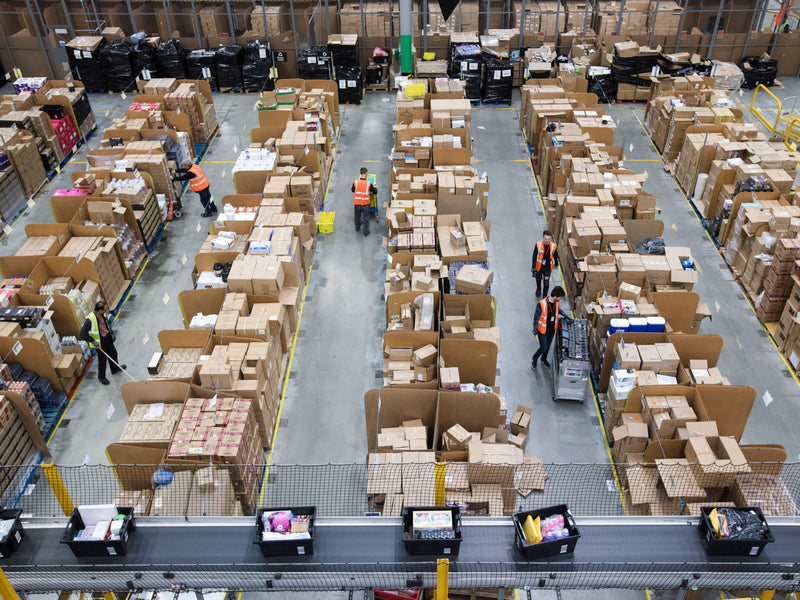Picking a “cost-effective” 3PL partner might look like a win on paper. You get a clean rate card, a low pick and pack cost, and the promise of streamlined operations. But six months in, your invoices start to balloon, customer service tickets spike, and you're paying more in penalties, rework, and lost sales than you ever expected.
We’ve been embedded inside dozens of high-growth eCommerce businesses, either as operators or partners, and we consistently see the same pattern. The real cost of fulfilment is not in the pick and pack fee. It’s in everything that comes after.
Storage creep, unplanned surcharges, poor inbound handling, missed SLAs, and rigid systems quietly drain margin. They also create service issues that damage customer experience, reduce repeat purchase rates, and harm lifetime value. Below, we break down the most common hidden costs and explain how to avoid them.
Storage Fees That Keep Growing
What looks like a flat monthly pallet fee can quickly grow as your inventory increases or slows down. Most traditional 3PLs charge extra for long-term storage, overflow inventory, and poor SKU velocity. Average pallet rates are now £16 to £25 per month, but we’ve seen brands paying far more due to long-tail stock, poor forecasting, or bulk deliveries made too early.
Why it hurts
-
Storage becomes a variable cost that is difficult to forecast
-
You get penalised for holding buffer or campaign stock
-
Slow-moving SKUs quickly erode contribution margin
Operator tip: Negotiate tolerance bands in your contract for storage peaks. Build in grace periods around launches or campaigns, and cap long-term fees relative to overall volume.
Surcharges, Admin Fees, and Service Failures
A traditional 3PL rate card rarely includes the full picture. Most brands end up paying 20 to 35 percent more than expected due to hidden surcharges and avoidable service issues. These include:
-
Returns handling: typically £1 to £3 per unit, especially if quality control is required
-
Relabelling: charged when barcodes are missing, unreadable, or misaligned
-
Inbound handling: added fees when stock arrives without proper cartons, labels, or manifests
-
Kitting or assembly work: separate charges for combining or bundling products
-
Fuel surcharges: indexed to diesel prices, often with no upper cap
-
Remote area or regional delivery surcharges: especially common for rural UK or international shipments
-
Missed SLA penalties: when warehouse processing delays lead to late dispatches
-
Returns from failed deliveries: cost both the original shipment and the refund
-
Undervolume penalties: for not meeting minimum weekly or monthly order volumes
-
System or platform fees: monthly charges for API access or extra users
-
Inflation surcharges: general cost increases added mid-contract under “economic adjustments”
Why it hurts
-
Unplanned spend makes it hard to trust margin forecasts
-
Refunds, cancellations, and support tickets climb when SLAs slip
-
Poor fulfilment damages retention and lifetime value
Operator tip: Ask for a full surcharge schedule during negotiation. Then model realistic order volumes, return rates, and inbound errors to calculate the actual cost of doing business. Don’t base your decision on a pick and pack rate alone.
The Cost of Rigidity When Scaling or Switching
Traditional 3PLs are rarely built to grow with you. Contracts often include high minimums, limited flexibility, or restrictions on multi-node fulfilment. When you want to scale into a new market or switch providers, costs stack up.
-
You may pay two providers during the switch
-
Stock may need to be relabelled or repacked to meet new standards
-
IT teams often face additional integration or platform configuration charges
-
International expansion triggers new tariffs, customs processes, or documentation fees
-
You may lose leverage or consistency when contracts aren’t aligned across sites
These switching and scaling costs are rarely budgeted for. But they can easily stretch into the tens of thousands if not planned for correctly.
Operator tip: Build flexibility into your 3PL relationship. Where possible, work through a 4PL model that manages multiple fulfilment providers and can transition you across the network without disruption.
Conclusion: When Cheap Isn’t Really Cheap
Low rates on a spreadsheet mean nothing if they come wrapped in uncertainty, volatility, and rework. Brands that treat 3PL selection as a commodity often find out too late that the real costs were never disclosed.
At eComplete, we’ve operated our own brands and worked with dozens more. We benchmark every line item, forecast true landed cost, and create scalable fulfilment strategies that don’t punish growth. If your fulfilment invoices are creeping up and your SLAs are letting customers down, it might be time to reconsider your setup.
Book a Cost-Benchmark Session
Let’s help you uncover the real cost of your current setup. We’ll review your contracts, forecast savings, and build a roadmap to better performance.



